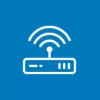Nothing is more frustrating than a slow Internet connection. Trying to get things done using a crippled connection is often downright annoying. What is even worse is when you cannot connect to the Internet at all. But before you go too crazy, you should know that there are often simple solutions. Try these quick fixes from moneyland.ch for dealing with common Internet connection problems.
1. Try using other websites or online services
Sometimes, only certain websites are affected by an Internet problem. In that case, trying to find the source of the problem is not worth your time. Note that there are huge servers. If one of these major servers has a technical issue, many different websites might be affected by it.
Test whether or not you can access other websites. If other websites work fine, then the problem is likely with the server which gives you access to the misfunctioning website. In that case, you should simply wait a while and then try again later.
2. Check your cable connections
Check whether your Internet router is properly connected. Is the router’s power supply correctly plugged in to the electric socket? Is the cable from the router to your phone line, cable TV connection or optical fiber socket properly plugged in to both the socket and your router? If any other cables are connected to your router, check those as well.
3. Check your telecom provider’s website for disruption alerts
Many Internet service providers (ISPs) post alerts about disruptions on their websites. If you are connected to the Internet via a phone line or optical fiber, search Swisscom’s web page for service notices, faults, and interruptions to check if there are any notifications for your location. The accidental damage a telecom cable by construction workers, for example, can affect many different Internet connections in that area, regardless of which ISP they use. If you Internet connection does not work at all, use the mobile data connection on your phone to check about disruptions online.
If network infrastructure has been damages, then there is nothing you can do but wait until it has been repaired. Depending on the damage, it can take up to several days until the repairs are complete. Using your phone as an Internet hotspot can be an option, especially if your mobile plan includes unlimited data. Just be aware that other people in your area will likely do the same thing, so you can expect your mobile connection to be slower than normal.
4. Restart your devices
In many cases, simply restarting your router can already fix the problem. Turn off the router and wait for a few minutes before turning it on again. The router will then establish a brand-new Internet connection. If after one hour, the Internet connection still does not work as well as it should, then the fault probably does not lay with your router.
Try restarting all of the devices which use the Internet connection. In addition to computers and laptops, you may also have phones, tablets, Internet radios, e-book readers, and set-top boxes.
5. Optimize your computers, tablets, and phones
It can be beneficial to check which processes and apps are running in the background. These can slow down the Internet connection. Go to the system preferences and deactivate any processes or apps which do not need to be active. If there are programs and apps which you do not need any more, delete them completely.
Use an antivirus program to find out whether any malware or viruses are present on your device. Use the antivirus program to remove the harmful software from your device, and take measures to protect yourself from malware in the future.
Turning off automatic software updates is beneficial if you have a slow Internet connection. You should still make sure that updates get done, but running updates manually lets you choose a time when you do not need the Internet for other activities.
6. Use cables instead of WLAN
Connecting devices to your router using ethernet cables instead of WLAN results in a much more stable connection. Make sure to use a network cable that matches the speed of your Internet connection. Tip: Get ethernet cables which meet the Cat 5e or Cat 6 standards.
The benefits of using ethernet cables are particularly noticeable for TV set-top boxes and television sets. For gaming too, you will get better performance by connecting your PC directly to your Internet router using a network cable.
While it is a fact that many devices like phones, tablets, and even many laptops do not have ethernet sockets, you should consider using direct cable connections for all devices which do. This simple step can solve many common Internet issues.
7. Use a different DNS server
Every time you link to an Internet address, the server’s name is sent to a DNS server. The DNS server then sends back the IP address for that server name. The IP address is kind of like a phone number. It is used to create a connection between your device, and the server which you want to connect to.
DNS servers are not all equal in terms of speed. A DNS server may also become temporarily disabled due to technical problems. You can change the DNS server used by your Internet router, computer, phone, or tablet. This can be done in the network settings. Make sure to screenshot or copy the existing settings before you change your DNS server.
Some well-known DNS servers:
| Service provider |
DNS address (IPv4) |
DNS address (IPv6) |
| Cloudflare DNS |
1.1.1.1 |
2606:4700:4700::1111 |
| Google Public DNS |
8.8.8.8 |
2001:4860:4860::8888 |
| Open DNS |
208.67.222.222 |
2620:119:35::35 |
| Quad 9 (Swiss non-profit organization) |
9.9.9.9 |
2620:fe::fe |
If changing to a certain DNS server does not result in a noticeable improvement, try out a different DNS server.
8. Optimize your WLAN
Many wireless networks use the 2.4 gigahertz frequency. But many WLAN routers are also capable of supporting the 5 gigahertz band. If you have problems with your WLAN network, try changing your router’s settings to use a different frequency. The main requirement is that all of your online devices also support the alternative frequency.
Placing your WLAN router correctly is also important. Here are some tips for choosing the best spot for your router:
- Choose a spot which is more or less in the middle of your home, so that the signal reaches all parts of your home equally.
- A spot higher up on the wall gives the signal a further reach.
- Do not place the router inside a closet or other piece of furniture. Ideally, there should be a clear line of sight between your router and your devices.
- Avoid locations where the signal will have to pass electrical appliances like refrigerators, televisions, or coffee machines to reach your device, as these can interfere with the WLAN signal.
Be aware that well-insulated walls and ceilings are generally an obstacle for radio waves. So, you should avoid placing your WLAN router in a spot where the signal will have to pass through walls to reach your devices. If your home has more than one floor, then it is better to get separate WLAN routers for each floor, and connect these directly to your Internet router using ethernet cables. If you want to use WLAN on your balcony, it can be beneficial to place your router in a way that allows for a line of sight to the balcony. Leaving your balcony door or a window open while using the Internet on your balcony can also help optimize the connection.
9. Avoid powerline networks
Powerline networks let you use the existing electric wiring and power sockets in your apartment or house to connect devices to your Internet router. That seems practical, because you do not need to install any new cables. But in practice, powerline networks tend to have more issues.
10. Check your maximum Internet speed
Often, the actual speed of your Internet connection is lower than the advertised speed, especially if you do not have an optical fiber connection. When you connect to the Internet through your phone line or cable TV connection, the speed may be much lower than the real speeds which your Internet plan is capable of. For example, you may only be able to connect at 12 Mbps, although your Internet plan is advertised as a 200 Mbps plan. Before getting an Internet plan, ask the Internet service provider about the speeds which you can actually expect to get at your specific address.
In some cases, moving to a local cable network operator can result in a faster Internet connection. Before you change providers, ask your immediate neighbors about possible experiences with the local cable network. A mobile data connection can also be an alternative for home Internet. But in many locations, mobile connections do not provide optimal Internet access. Using a satellite connection (Starlink, for example) is another alternative.
There are also addresses which simply do not have access to high-speed Internet. In these exceptional cases, your only option for getting high-speed Internet will be to move.
11. Choose a well-connected Internet service provider
Many telecom companies are, themselves, poorly connected to the Internet. This creates a bottleneck through which data has to squeeze as it flows between their customers and the Internet. Downloading the newest version of iOS to your iPhone can end up taking several hours when you use a poorly-connected telecom company. The same download, but with an ISP which is well connected, can take just a few minutes.
There is no short-term solution to this problem. If you have a friendly neighbor who also happens to have a better ISP, you could ask them if they are willing to share their WLAN connection. But over the longer term, you will have to migrate to a telecom company with better Internet connections. Make sure to give sufficient notice, in keeping with your old plan’s required notice period, or you may be charged a penalty fee.
Many ISPs, and large telecom companies in particular, use poor connections as a strategy to maximize profits. By bottlenecking access to online services, they aim to push the service providers (streaming companies, for example) to pay for a direct connection to the ISPs network.
If you want to avoid this problem, you should choose an ISP which is well connected to the Internet. Two important factors are peering and cache servers. Peering is the practice of creating direct links from one ISP to other ISPs all over the world via Internet exchange points. This allows data to be transferred directly from one ISP to another without many detours. A cache server is a network server on which data which is frequently requested by Internet users is stored. The cash server is connected directly to your ISP, so data is transferred directly from the ISP to your Internet connection, instead of having to be transferred around the world over the Internet. Video-streaming service Netflix, for example, places a strong emphasis on setting up cache servers at ISPs, but this strategy requires ISPs being willing to partner with it.
12. Use the latest software
Make a habit of regularly updating your operating system and your web browser. Ideally, set up automatic updates for your operating system and programs. In addition to improving Internet speed, regular updates also help to prevent security breaches. Updating your Internet router’s firmware is also important.
13. Check your Internet router’s settings
The default settings of some Internet routers, including the popular Fritzbox routers, only allow for slow ethernet and USB connections. This problem is easy to fix. Just log into your router to access the settings, and raise the speeds for these connections. Connecting at speeds of a gigabit or more is only possible if your Internet router, cables, and computer all support these speeds.
14. Contact your telecom company
If you have tried all of the above and your Internet connection is still problematic, then at least you can deduct most possible causes from your investigation. The only solution, in this case, is to contact your service provider. Quite possibly, your Internet service provider will have to change certain settings completely, and in many cases, they will offer to exchange your Internet router.
More on this topic:
Compare Swiss home Internet offers now


 Deal of the Day
Deal of the Day 




